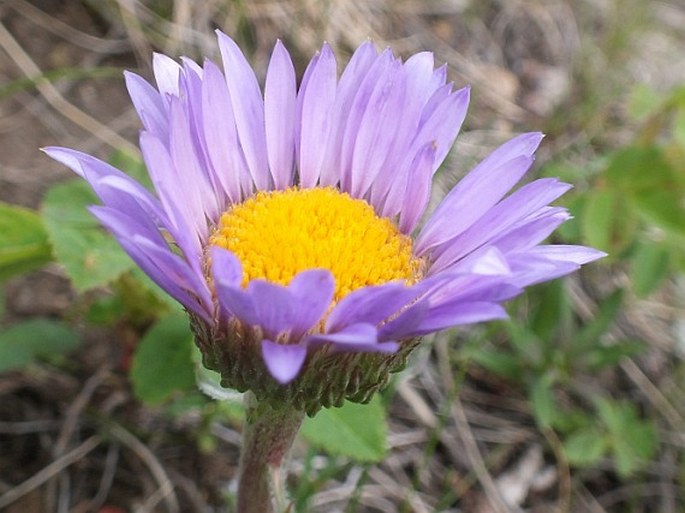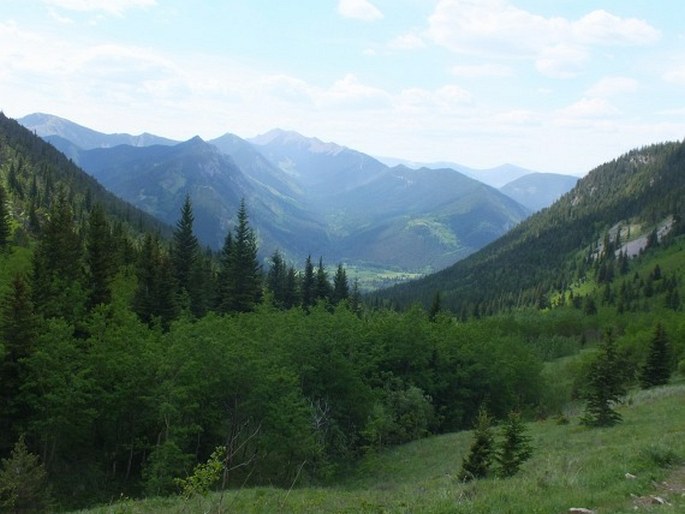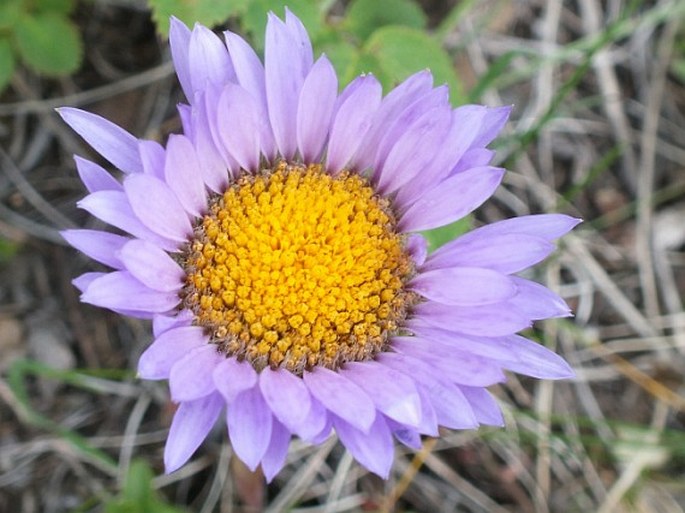Family: Asteraceae Bercht et J. Presl

Distribution: North American species from the western part of the continent, occurring in British Columbia, Alberta, Oregon, Nevada, Idaho, Montana and Wyoming. Absent in state of Washington.
Ecology: Dry rocky hillsides, rocky meadows and grassy slopes at elevations 1500–3000 m. Blooms from May to August.

Description: Biennial to short-lived perennial herb, 5–25 cm tall at flowering, from stout taproot. Basal leaves numerous in a rosette, petiolate, oblong to lanceolate to spatulate, 20–50 × 2–8 mm, hairy underneath, margins smooth; stem leaves alternate, smaller. Heads single, terminal, 5–7 cm across; involucral bracts lanceolate, green, margins translucent and fringed, in several overlapping rows; ray florets purplish to blue, rarely white or pink, 20–70, 1–2.5 cm long; disc florets yellow, numerous. Fruit is an compressed achene with pappus of long bristles.
Note: The species name honour of British-American botanist and mountaineer Charles Christopher Parry (1823–90), who described some 100 new species in Colorado.


These images were taken in Canada, Alberta, Highwood Grass Pass (June 8, 2016).


